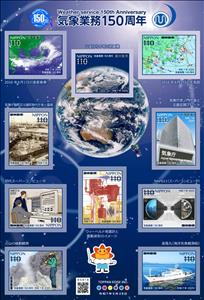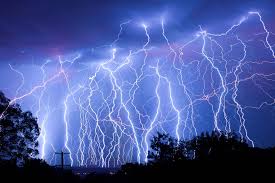Mini Sheet: Japan Meteorological Agency, 150 Years (Japan 2025)
Japan Meteorological Agency, 150 Years (Japan 2025)
28 May (Japan ) within release Japan Meteorological Agency, 150 Years (2025) goes into circulation Mini Sheet Japan Meteorological Agency, 150 Years face value 10*110 Japanese yen
| Mini Sheet Japan Meteorological Agency, 150 Years in catalogues | |
|---|---|
| Colnect codes: | Col: JP 2025.05.28-01 |
Mini Sheet is vertical format.
Also in the issue Japan Meteorological Agency, 150 Years (2025):
- Stamp - First image of Himawari No. 9 face value 110;
- Stamp - First supercomputer face value 110;
- Stamp - Image of Wiechert seismometer and seismic waveform face value 110;
- Mini Sheet - Japan Meteorological Agency, 150 Years face value 10*110;
- Stamp - Mobile observation of volcanoes face value 110;
- Stamp - Motoemachi Period Government Building and Outdoor Hall face value 110;
- Stamp - NAPS11 (supercomputer) face value 110;
- Stamp - Ryofumaru (marine weather observation vessel) face value 110;
- Stamp - Satellite image of June 1, 2016 face value 110;
- Stamp - Toranomon Office Building and front entrance plate face value 110;
- Stamp - Weather map for June 1, 2016 face value 110;
Mini Sheet Japan Meteorological Agency, 150 Years it reflects the thematic directions:
A building or edifice is a structure with a roof and walls standing more or less permanently in one place, such as a house or factory. Buildings come in a variety of sizes, shapes and functions, and have been adapted throughout history for a wide number of factors, from building materials available, to weather conditions, to land prices, ground conditions, specific uses and aesthetic reasons. Buildings serve several needs of society – primarily as shelter from weather, security, living space, privacy, to store belongings, and to comfortably live and work. A building as a shelter represents a physical division of the human habitat (a place of comfort and safety) and the outside (a place that at times may be harsh and harmful).
A computer is a machine that can be programmed to automatically carry out sequences of arithmetic or logical operations (computation). Modern digital electronic computers can perform generic sets of operations known as programs. These programs enable computers to perform a wide range of tasks. The term computer system may refer to a nominally complete computer that includes the hardware, operating system, software, and peripheral equipment needed and used for full operation; or to a group of computers that are linked and function together, such as a computer network or computer cluster.
A map is a symbolic depiction emphasizing relationships between elements of some space, such as objects, regions, or themes. Many maps are static, fixed to paper or some other durable medium, while others are dynamic or interactive. Although most commonly used to depict geography, maps may represent any space, real or imagined, without regard to context or scale, such as in brain mapping, DNA mapping, or computer network topology mapping. The space being mapped may be two dimensional, such as the surface of the earth, three dimensional, such as the interior of the earth, or even more abstract spaces of any dimension, such as arise in modeling phenomena having many independent variables. Although the earliest maps known are of the heavens, geographic maps of territory have a very long tradition and exist from ancient times. The word "map" comes from the medieval Latin Mappa mundi, wherein mappa meant napkin or cloth and mundi the world. Thus, "map" became the shortened term referring to a two-dimensional representation of the surface of the world.
Meteorology is a branch of the atmospheric sciences (which include atmospheric chemistry and physics) with a major focus on weather forecasting. The study of meteorology dates back millennia, though significant progress in meteorology did not begin until the 18th century. The 19th century saw modest progress in the field after weather observation networks were formed across broad regions. Prior attempts at prediction of weather depended on historical data. It was not until after the elucidation of the laws of physics, and more particularly in the latter half of the 20th century, the development of the computer (allowing for the automated solution of a great many modelling equations) that significant breakthroughs in weather forecasting were achieved. An important branch of weather forecasting is marine weather forecasting as it relates to maritime and coastal safety, in which weather effects also include atmospheric interactions with large bodies of water.
A ship is a large watercraft that travels the world's oceans and other sufficiently deep waterways, carrying passengers or goods, or in support of specialized missions, such as defense, research and fishing. Historically, a "ship" was a sailing vessel with at least three square-rigged masts and a full bowsprit. Ships are generally distinguished from boats, based on size, shape and load capacity.





